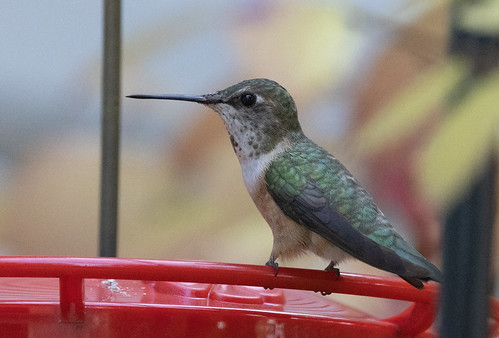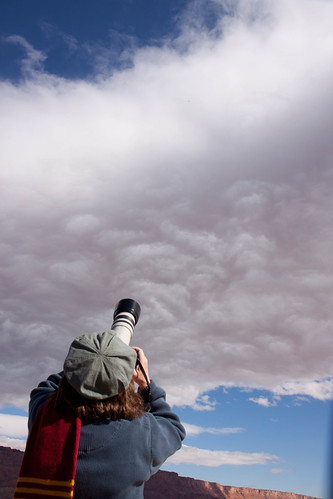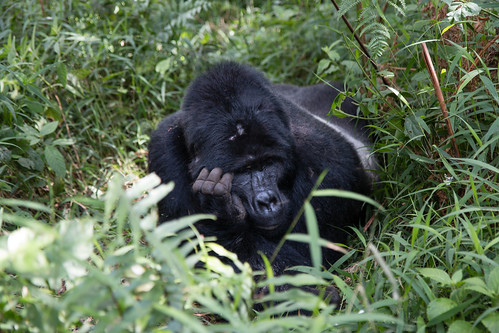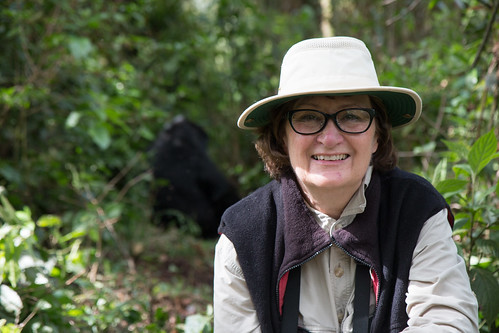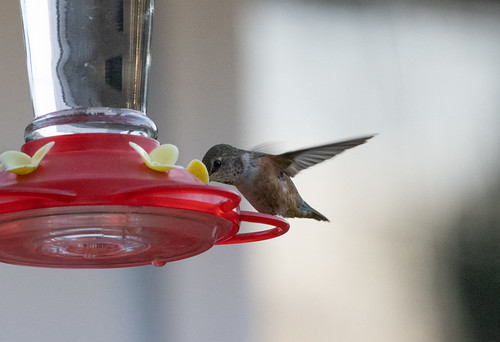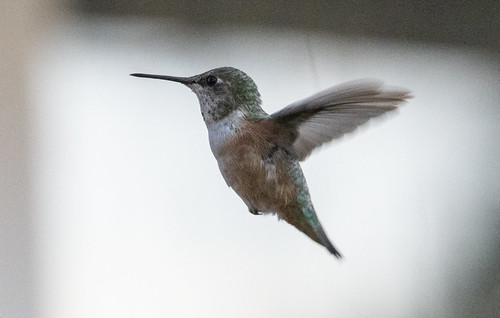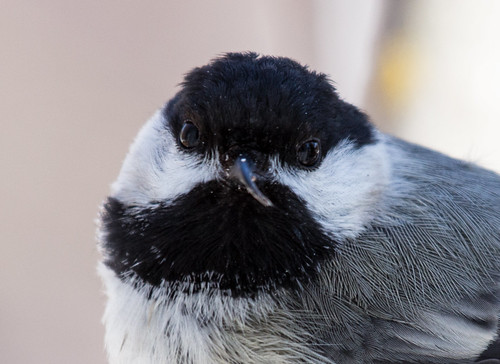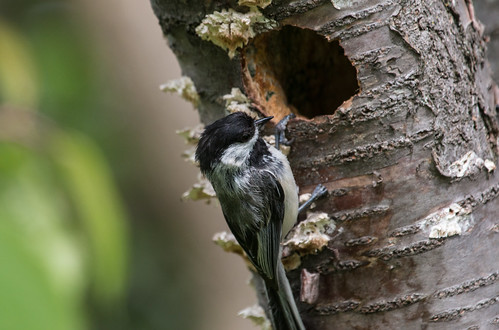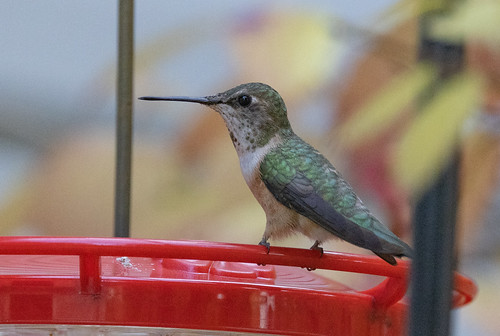Seeing cool birds is always wonderful, and especially so on a milestone birthday. The only time I specifically planned for a good bird on my birthday was when I turned 60 on 11/11/11—Russ and I went to the Grand Canyon to see my lifer California Condor.
I did a Big Year in 2013 and added one cool species on my birthday that I didn’t see at all the rest of that year, a Hook-billed Kite in Anzalduas Park in Texas. This one wasn’t a lifer—I’d seen them before in Costa Rica and Guatemala—but that birthday sighting remains the only time I’ve seen one in the U.S.
I saw an amazing 16 lifers on my birthday in 2016, when I was in Uganda. I’m sure I’ll never do better than that numerically, but I’m afraid they were eclipsed by the fact that that was also the day I got to see Mountain Gorillas.
This year a lifer wasn’t in the picture at all, but the bird of the day was pretty darned cool—a Rufous Hummingbird who’s been coming to my bird feeders since Monday. She showed up on the next block of Peabody Street, at the feeders of a wonderful woman named Jenny at some point before Halloween. When my neighbor Jeanne found out about it, she told me and set out her own feeders.
Of course I had to set out my feeders, too.
Hanging out in three different yards has made it more complicated for birders descending on the neighborhood to add her to their county and state lists, but birds like to have options. I’m making my sugar water using a rounded 1/3 cup of sugar per cup of water. This is on the strong side but still within the natural sugar concentration range of flower nectar. Hummingbirds need enough water to metabolize sugar, but the cold, wet weather we’re having right now means she needs more calories relative to water.
She showed up quite a few times over the course of the day yesterday, but she’s skittish when people are gawking at her, so I set my good camera on a tripod and left it on the porch to record video while I watched from a distance indoors. I got one really good video of her arriving at the feeder and pigging out. That video is in slow motion so it lasts exactly 3 minutes, allowing us to enjoy her movements in a way our mere human eyes can’t resolve in real time.
Hummingbirds are of course extremely rare vagrants in Duluth in November. I had another female Rufous Hummingbird back in 2004—she showed up on November 16 and stayed in my yard until December 3, surviving a blizzard and a night with temps plunging into single digits.
She left at mid-morning on a sunny, mild day after filling up starting before dawn, so I’m sure she managed to get pretty far, though I devoutly hoped she’d run into more yards here and there where people were still keeping out their hummingbird feeders with reasonably fresh sugar water.
Late hummingbirds are so rare that of course few people leave feeders out for them—it’s been 17 years since that last one, which isn’t much of a payoff for keeping a feeder out and the water reasonably fresh for two months after hummingbirds are essentially gone.
One rehab center was telling people earlier this fall to take in hummingbird feeders so they don’t create what they called a “food island” that could keep them north too long. But that's ridiculous. The hummingbirds that breed here, Ruby-throateds, simply don’t stick around later than each individual needs to get its body ready for the long journey—their migration is timed exactly when food is extremely abundant, and even the richest garden with lots of feeders as well is not enough to make any linger.
The only times I’ve ever had a Ruby-throat in early October, it stopped momentarily, pigged out, and immediately moved on. Those late Ruby-throats are young birds hatched late in the season who needed longer to get in shape, or adult females who nested late and again needed more time to get their bodies ready for the rigors of migration. My feeder was just an emergency wayside, not a "food trap."
No matter how long people leave out their feeders, stragglers after early Oct. up here never include Ruby-throated Hummingbirds. Late hummers are always vagrants from other ranges who simply chance upon our feeders and wander on when they get their body fat where it belongs. Some of these hummingbird stragglers do die, of course, just as do birds in our yards during every other season. But of the cases I know about, the deaths invariably happened when well-meaning people trapped the birds to “rescue” them. Now trapping hummingbirds to overwinter them indoors or transfer them to where people think they belong is strictly prohibited.
The superb writer and ornithologist Scott Weidensaul has researched this issue extensively. His and an abundance of other research is showing that Rufous Hummingbirds are extending their winter range into the eastern US, perhaps as a result of habitat loss and climate change issues in their traditional range in Mexico. And some of these birds are surviving winters in OH and PA, and even returning the next year. In 2014, a banded hummingbird in State College, PA, survived air temperatures of -9º F and wind chills of -36º F. Remember—Rufous Hummingbirds breed in the Rocky Mountains in Alaska. They are survivors.
Birds understand their lives and their needs far better than we arrogant humans do. When I had a chickadee with a deformed bill and missing toes, I trusted that the little guy would do what it needed to survive as long as possible. A year and a half later, the overgrown bill tip had broken off and the little chickadee found a mate and successfully fledged a brood.
When my previous November Rufous Hummingbird stayed on until December, I trusted that she’d move on when she was ready, and she did. This year’s hummingbird in my neighborhood may not make it, but there's a good chance she will, to move on as soon as her body tells her it’s ready. Her destiny belongs to her, not me.
